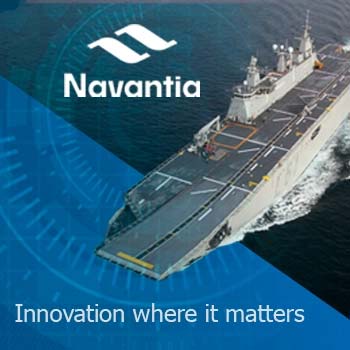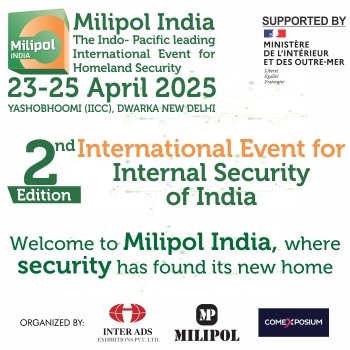The Indian Air Force celebrates its 92nd birthday this year. But even though the service began with wood and fabric biplanes and now, employs some of the most advanced aerospace systems in the world, the basics have not changed.
The air arm is the eyes, ears, shield, and sword of a nation and India is no different. From the first days of the independent air forces, the value offered by aircraft was clear: seeing an adversary first, creating time in which to decide how to respond — and providing choices for what actions to take.
Today a new generation of aircraft, led by remotely piloted aircraft systems such as the MQ-9B SkyGuardian®, are prepared to take on those missions in a way that the goggled aviation pioneers of yesteryear would not have recognised.
First, these aircraft have no pilot on board. The crews of the SkyGuardian stay safely away from bad weather and enemy action by operating the aircraft from a ground control station that might be thousands of miles away from its mission area. This not only protects them but also means that a crew cadre can work in shifts without the need to deploy to a remote forward station. This is a less costly and more humane practice for personnel.
Second, although MQ-9B gets airborne via a propeller engine just as Indian aviators once did aboard the Westland Wapiti, that is where the similarities end. The SkyGuardian’s turboprop engine is much more powerful and is also built for efficiency. This means the MQ-9B can fly for 30 hours or more, in some configurations, supplying intelligence, surveillance, and reconnaissance philosophically identical to the Wapiti but a quantum leap better in every other respect.
The SkyGuardian’s turboprop engine is much more powerful and is also built for efficiency. This means the MQ-9B can fly for 30 hours or more, in some configurations, supplying intelligence, surveillance, and reconnaissance philosophically identical to the Wapiti but a quantum leap better in every other respect
The Indian Navy has operated preproduction model MQ-9B aircraft for several years under a lease-hire agreement with our company, General Atomics Aeronautical Systems, Inc. Negotiations are underway for the acquisition of a larger batch of much more capable production-model machines. Although details continue to be worked out between the Indian and United States governments, it is hoped that the Indian Air Force would receive its own detachment of MQ-9Bs and, further, that much of their production would consist of Indian industrial contributions.
The details are still under negotiation, but some aspects of the arrangement have already been announced. For example, General Atomics Aeronautical Systems, Inc., and Bharat Forge Limited announced a partnership to manufacture main landing gear components, subassemblies, and assemblies of remotely piloted aircraft.
Part of the Kalyani Group, Bharat Forge is the largest repository of metallurgical know-how, design and engineering expertise, and manufacturing prowess in India. With more than five decades of experience in manufacturing a wide range of critical high-performance safety components, Bharat Forge offers a full-service supply capability from concept to product design, engineering, manufacturing, testing, and validation.
The aircraft’s onboard sensors send back full-motion video any time of day or night. Its synthetic aperture radar permits naval commanders to see through clouds, smoke, rain, mist, or other conditions. And it can carry a huge variety of payloads to further extend its capability and versatility
Another example is GA-ASI’s partnership with Hindustan Aeronautics Limited. In 2023, it was announced that turbo-propeller engines for Indian applications will be supported by Hindustan Aeronautics’ Engine Division in Bengaluru.
Other relationships will increase the Indian value added to each MQ-9B aircraft, strengthen the Indian aerospace industrial sector, and further expand the Aatmanirbhar Bharat Abhiyaan philosophy of Prime Minister Narendra Modi that is known in English as “Make in India.”

The preproduction MQ-9Bs have changed the Indian Navy’s ability to operate around the region. Larger numbers of newer, more capable production-model aircraft will take this to the next level.
These aircraft operate in virtually any type of weather and already have flown tens of thousands of hours, providing the highest-quality intelligence, surveillance, and reconnaissance information. The aircraft’s onboard sensors send back full-motion video any time of day or night. Its synthetic aperture radar permits naval commanders to see through clouds, smoke, rain, mist, or other conditions. And it can carry a huge variety of payloads to further extend its capability and versatility.
For example, an aircraft might go on patrol with an additional radar attached to its centreline station. This sweeps the ocean surface over 360 degrees and provides complete awareness about all the ship traffic in the region. The aircraft also monitors the Automated Information System (AIS) that vessels use to transmit information about themselves, their cargoes, the points of origin, destinations, and so on.
The benefits for India haven’t been theoretical. Repeatedly these aircraft have helped the Indian Navy take on its new and greater role as a security provider for the Indian Ocean and the wider region. They have helped monitor pirates and supported rescues of hijacked ships
But the smarts of this system go still further. Let us imagine that a vessel wanted to sail through an area and deceive the navy or coast guard authorities. It might turn off its AIS transmitter in hopes that no one would see it. MQ-9B sees it, however, and notes that it is not broadcasting. This it calls to the attention of naval authorities, who can then fly the aircraft closer to investigate the ship in question. With the aircraft’s powerful onboard sensors, they can see exactly what type of vessel is below, even reading the name off its hull.
The benefits for India haven’t been theoretical. Repeatedly these aircraft have helped the Indian Navy take on its new and greater role as a security provider for the Indian Ocean and the wider region. They have helped monitor pirates and supported rescues of hijacked ships. When Indian special operations troops dropped by parachute to free one captured ship, commanders on land were able to watch the whole proceedings live thanks to the MQ-9B orbiting overhead.
Adding more of these aircraft, increasing their capabilities, and enhancing the powers of India’s aerospace and defence sector — all this and more will, it is hoped, make the coming decades for the Indian Air Force even more capable and productive than its first nine.
–The writer is Chief Executive at General Atomics Global Corporation. The views expressed are of the writer and do not necessarily reflect the views of Raksha Anirveda










